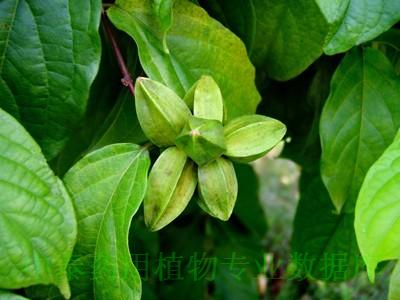| [English Name] | Rangoon creeper Fruit | |
| [Chinese Name] | 使君子 | |
| [Pinying Name] | Shijunzi | |
| [Latin Name] | Fructus Quisqualis | |
| [Genera] | Combretaceae | |
| [Efficacy] | quchongyao | |
| [Pictures] | Plant picture | Drug picture |

|
|
|
| [Alias] | ||
| [Source] | ||
| [Plant morphology] | ||
| [Distribution] | ||
| [Gathering and processing] | ||
| [Characteristics] | ||
| [Ecology] | It grows in hillside around forest、bushes or forest beside stream.It is usually planted in some interspace,just as warm、moist、exposed to the sun and leeward front of or back of the house、forest side、the foot of a wall、hedge side,needs amplectant conditions for cane. | |
| [Chemical composition] | ||
| [Pharmacological activities] |
1.Expel 2. Anti-Dermatophytes: Water extract show varying degrees inhibit activity on dermatophytes including trichophyton concentricum, epidermophyton inguinale and so on[2]. |
|
| [Clinical trial] | Shijunzi (quispualis indica) Ascariasis:shijunzi (quispualis indica) 30g, first fry in iron pot for 20 min, make themdry brittle. Chew up and take it 2h before breakfast, at the same time drinksmall amount of boiling water. The negative conversion rate of defecateascariasis egg was 78.78% after one time treatment (52/66) [1]. |
|
| [Properties] | ||
| [Medical and other Uses] | ||
| [Dosage] | ||
| [Cautions] | ||
| [Traditional usage] |
1. Attacking pain due to roundworm in belly with spitting clear foam in children 2. Intestinal parasites in adults and children 3. A lump in the abdomen of children, big belly, emaciation with sallow complexion, gradually into infantile malnutrition 4. Illnesses of children, including disharmony of the spleen and stomach, expansion of the heart and abdomen, abdominal pain sometimes, poor appetite, gradually resulting in infantile malnutrition 5. Jaundice, preferable to raw rice, tea leaf, carbon, soil, debris, etc. |
|
| [Toxicological studies] | ||
| [Pharmaceutical preparations] | ||
| [References] |
Pharmacologic Actions: [1] Zhou Tingchong. Science( [2] Cao Renlie. Chinese Journal of Dermatology, 1957,(4):286.
|
|